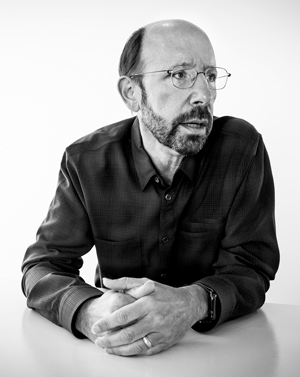Trending
The Closing: Gene Kaufman
The prolific architect on his ‘anti-starchitect’ label, on the McSam jackpot and on $2B worth of NYC projects.

Gene Kaufman is one of NYC’s most prolific architects. The lifelong New Yorker — who founded his eponymous firm in 1986 — has worked on more than 200 projects in Manhattan, Brooklyn and Queens over the past three decades, but his big break came in the late 1990s when he met Sam Chang. The developer cornered NYC’s budget hotel market and brought Kaufman along for the ride. In an effort to expand his reach after the financial crisis, Kaufman acquired the architecture firm Gwathmey Siegel & Associates in 2011, two years after principal Charles Gwathmey died. Often seen as an anti-starchitect, Kaufman has been both praised and panned by critics. He’s designed more than 50 NYC hotels and dozens of residential and office assignments. His firm has worked on more than $2 billion worth of projects to date. It currently has 20 projects under construction and at least a dozen in the drawing phase in 2017, including a 42-story, mixed-use building at 265 Broadway, across from City Hall Park.
DOB: February 5, 1958
Hometown: Queens Village
Lives in: West Village
Family: Married, one daughter
Where did you grow up, and what did your parents do for a living? My father was a mechanical engineer, and my mother was an elementary school teacher in New York City public schools. I grew up in Queens, kind of far out in Queens Village. I’m the oldest of four.
What inspired you to become an architect? When I was six, my parents enrolled me in art school. The Museum of Modern Art had one in those days in the basement. Every Saturday morning, I had art lessons there, and afterwards I would often go upstairs with my father and walk around the museum. I knew every painting. That was sort of my home away from home as a kid.
Your wife, Terry, is a professional pianist. How did you two meet? We were introduced by a [mutual] friend. We met on Avenue D and Second or Third Street at somebody else’s place that was kind of sketchy. When we first met, I think Terry really wasn’t aware that it was a setup, so it took a little while. But I did go hear her play and did ask her out. Six months later we were living together.
Is there anything architecturally significant about your current West Village home? It’s an 1861 row house in a landmarked district. When I saw it in 1992, it was abandoned. It had no water or electricity, except there was one rent-controlled apartment on the ground floor that had services from the building next door piped in through the wall. When I saw it, I called Terry and said, “I think we’re going to buy this house because nobody would be so crazy to take this on.” It was not even what you would call a fixer-upper. It was almost a complete redo.
You worked for Rafael Viñoly for two years after you graduated college and had worked for another firm, WGM. How did those gigs influence your work? I would say that both WGM and Rafael were influential. The first firm was very practical. We did mostly middle-income-type housing. When I was working for Rafael, the focus was on big-statement architecture. I think I’ve chartered a course that’s between the two. You find a way to marry the practical and the ambitious in the projects. Sometimes if you’re too ambitious you end up with nothing
How did you meet Sam Chang? We had an assignment to do a new building in the Seaport for someone we had done another project for. One day, the client came to me and said, “I’m selling the site, and I’m doing you a big favor because the guy who is buying it is going to become your biggest and best client.” He was right, in fact, because the buyer was Sam Chang. Before we finished that project, I was already working on three other hotels for Sam.
You’ve been the subject of a lot of criticism over the years. Curbed once called you “the dark lord of architectural blandness.” How did you take that? A lot of the projects we do are mid-market. They are really intended for ordinary people. These are not the super high-end. They just don’t have the budget to become signature buildings. And to the extent that someone might call them bland, I would say that these buildings are part of the urban fabric. They’re not necessarily looking to stick out. They are not necessarily saying, “I’m the best, I’m the biggest, I’m the most important.”
Would you consider yourself a sort of anti-starchitect? I wouldn’t call myself anti. We’ve done some starchitect-type buildings, but the hotel program in and of itself doesn’t generally lend itself to those kinds of projects. Even if you look at the Four Seasons in Midtown, it was done by a starchitect-type architect, but it doesn’t figure like that type of building.
You were engaged in a heated fight in 2015 to save the NYC Opera company after it declared bankruptcy. Why did you back out of the competition? I realized at a certain point that it required a skill set that was above and beyond mine.
What’s the most extravagant thing you’ve ever purchased? One day I was going to the Building Department, and there was a foreign used-car lot, and I passed a beautiful 1957 Porsche 356 priced at $21,000, which is about what I expected to buy a car for so I bought it. I was flying to Europe the next day for a vacation. I told my wife about it on the airplane.
How’d that go? Not too well. She wasn’t happy. She made me put more seatbelts into it. I no longer own it. My daughter got too big to fit in the backseat.
What’s the best advice you’ve ever received? From my father, who said, “You do a project: It’s about one-third your effort to get the job, one-third to do the job and one-third to collect.” I think we’ve done somewhat better than that as far as the percentages, but it’s worth keeping in mind.
Do you think architects are paid enough? I think as a profession, it is not valued highly enough. There’s also a mindset in this country that people want a bargain, and they want to pay as little as possible for something. If someone is charging less, most likely, they are putting less work into the project.




